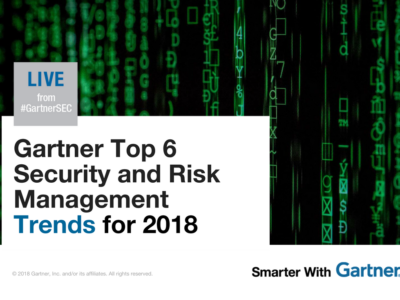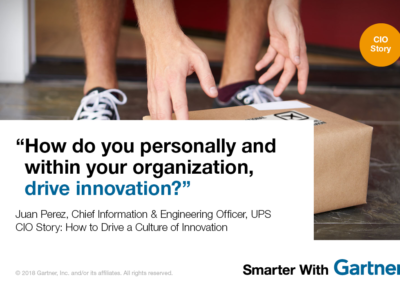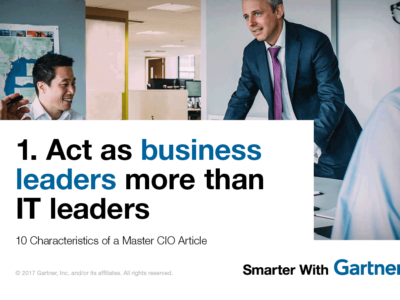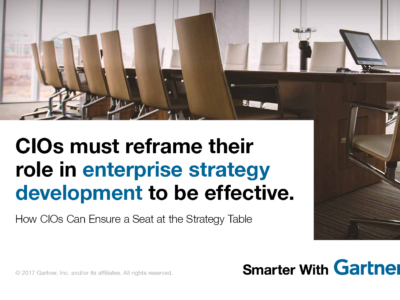As blockchain evolves, CIOs can avoid unnecessarily failure by acknowledging common pitfalls.
Organizations have begun experimenting with blockchain technology for a range of use cases including monetary remittances, academic credentialing systems, land title systems, and tracking the origin and provenance of products. Yet, Gartner estimates 90% of enterprise blockchain projects launched in 2015 will fail within 18 to 24 months.
Part of the problem is that the majority of enterprise blockchain projects don’t actually require blockchain technology. In fact, these projects would probably be more successful if they did not utilize blockchain.
Blockchain technology is at the Peak of Inflated Expectations on the Gartner Hype Cycle, which means that the Trough of Disillusionment is still to be navigated. CIOs should be aware of the common mistakes that can lead to disappointment and failure in enterprise blockchain projects.
Read More: Blockchain Combines Innovation with Risk
“The current generation of technology platforms have significant limitations in multiple areas that will result in their failure to meet the requirements outlined in the long-term vision,” said Ray Valdes, vice president and Gartner Fellow. Many enterprises are still jumping on board the blockchain bandwagon and for most, disappointment will be the next phase.”
However, simply knowing where the frequent points of failure exist can help enterprises avoid falling into the same traps.
- Misunderstanding or ignoring the purpose of blockchain technology
For a project to utilize blockchain technology effectively, it must add trust to an untrusted environment and exploit a distributed ledger mechanism. Private blockchain deployments relax the security conditions in favor of a centralized identity management system and consensus mechanism that obviates the trustless assumptions. To correct this, enterprises must create a trust model of the entire system to identify trusted areas versus not-trusted areas and apply blockchain only to the untrusted parties. - Assuming that current technology is ready for production use
Despite a market of over 50 different blockchain platform technologies, only the bitcoin stack and the Ethereum platform are proven “at-scale.” However, third-party system integrators and multiple startups are marketing the technology as if it were mature. CIOs should assume most blockchain platforms will be immature for 24 months, and continue with experimentation and proofs of concept, especially in the context of open source. - Confusing future blockchain technology with the present-day generation
Current blockchain platform technology is limited in scope, and falls short of meeting the requirements of a global-scale distribution platform that can enable the programmable economy. While that is the long-term plan for the technology, CIOs should ensure their blockchain use case timeline correlates with the evolving capabilities of blockchain functionality, as well as legal, accounting and regulatory maturity. - Confusing a limited, foundation-level protocol with a complete business solution
While the term blockchain is often used in conjunction with innovative solutions in industries such as supply chain management or medical information systems, what’s currently available on the market doesn’t always match what is hyped in news stories. Given how blockchain is talked about, IT leaders might think the currently available foundational-level technology is essentially a complete application solution. But realistically, blockchain has a lot of evolving to do until it’s ready to fulfill all the potential technologies. When considering a broad-scope, ambitious blockchain project, CIOs should view the blockchain portion to be less than 5% of the total project development effort.
- Viewing blockchain technology purely as a database or storage mechanism
Some IT leaders conflate “distributed ledger” with a data persistence mechanism or distributed database management system. Currently, blockchain implements a sequential, append-only record of significant events. It offers limited data management capabilities in exchange for a decentralized service and to avoid trusting a single central organization. CIOs must be aware of and weigh the data management tradeoffs to ensure blockchain is a good enterprise solution in its current form. - Assuming interoperability among platforms that don’t exist yet
Most blockchain technologies are still in the development stage and lack specific technology (or business) roadmaps. Fundamentally, wallets have no native fungibility, and ledgers themselves lack inherent integration capability. Critically, blockchain standards do not yet exist. This means that beyond assuming potential interoperability at the most basic level, CIOs should view any vendor discussions about interoperability with skepticism. Although there are multiple competing suppliers, the technology has not matured to a level where interoperability can be assured. Don’t expect blockchain platforms from 2016 to interoperate with blockchain platforms from a different vendor a year from now. - Assuming that today’s leading platforms will still be dominant (or even extant) tomorrow
With over 50 options in blockchain platform technologies, and another dozen on the horizon, CIOs should not assume that the technology selected for a project this year will offer longevity. As with mobile, social and e-commerce platforms of the past, it’s possible the most effective technology hasn’t yet even been created. CIOs should view blockchain options from 2016 and early 2017 as provisional or short-term options and plan projects accordingly. - Assuming that smart contract technology is a solved problem
Smart contracts, computer protocols that will facilitate and enforce contracts, are what will enable the programmable economy. However, at a technical level, smart contracts currently lack scalability, auditability, manageability and verifiability. Moreover there is no legal framework currently in existence — locally or globally — for their application. They will evolve in the next three to five years, but CIOs should be careful when developing smart contracts under current blockchain offerings and seek legal advice on their use. - Ignoring funding and governance issues for a peer-to-peer distributed network
The hypothesis is that blockchain platforms will be less costly than the current system of multiple redundant systems, processes and data interoperating with each other. However, the cost of blockchain technologies will be significant — made larger if existing legacy is not retired — and who will pay for what when multiple parties are participating remains mostly unanswered. Additionally, as the system grows in scale, so will the cost. Multiparty systems require new approaches to governance, security and economics that raise technical, as well as political,societal and organizational questions. - Failure to incorporate a learning process
Enterprises must take a hands-on approach to blockchain projects. The current time frame is critical for establishing test-and-learn constructs. The lessons learned from experimenting with the platforms, new business models, processes and products will be helpful for future implementations as part of a broad-scale digital transformation. Even if projects are contracted out, the IT department should work closely with the third-party supplier/partner to learn skills and concepts such as peer-to-peer computing, smart contracts, consensus mechanisms, identity management, governance and more that will be essential in future projects. CIOs should ensure knowledge is developed and transferred across the enterprise and recognize that knowledge might be the only value delivered by a blockchain project from 2016 and early 2017.
Get Smarter
Client Research
Clients can learn more about how to avoid blockchain failure in the full research report Top 10 Mistakes in Enterprise Blockchain Projects
Gartner CIO Forum
Gartner analysts, and industry leaders will discuss key issues facing the CIO during Gartner’s CIO conferences taking place February 21-23 in Phoenix, AZ, March 13-15 in London, March 19-21 in Hollywood, Florida, May 18-19 in Munich and June 6-8 in Toronto. You can follow news and updates from the event on Twitter using #GartnerCIO.
CIO Leadership hub
Visit Gartner CIO hub for complimentary research and webinars.










